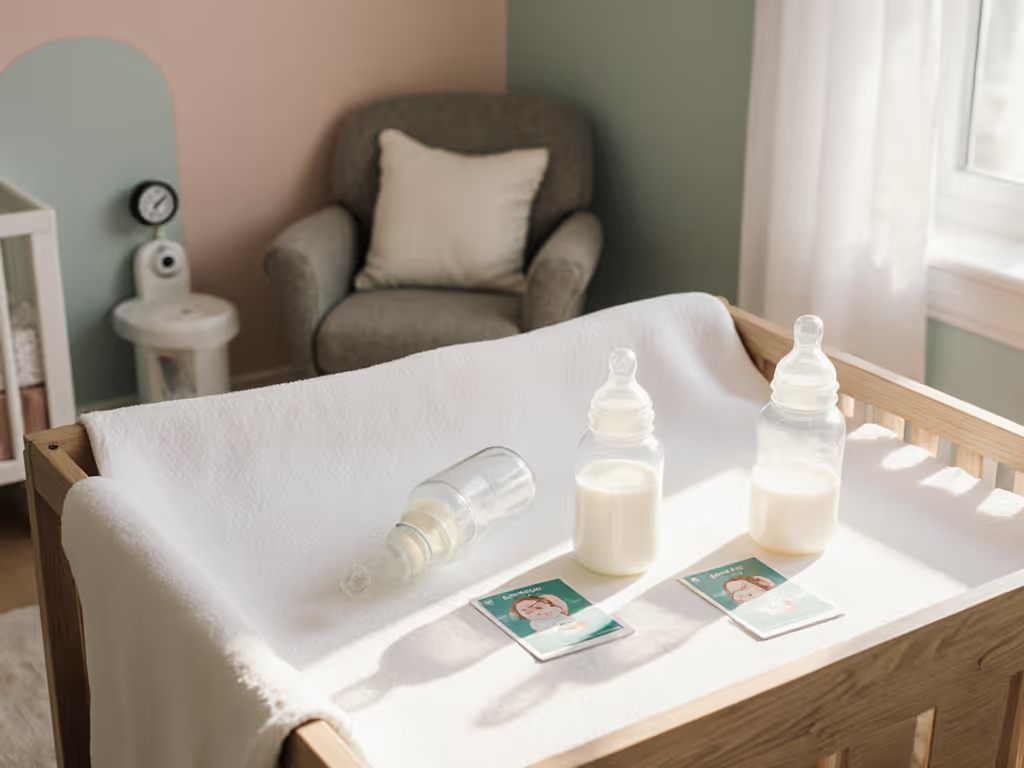
Why Bottle Size Varies: Complete Parent Guide
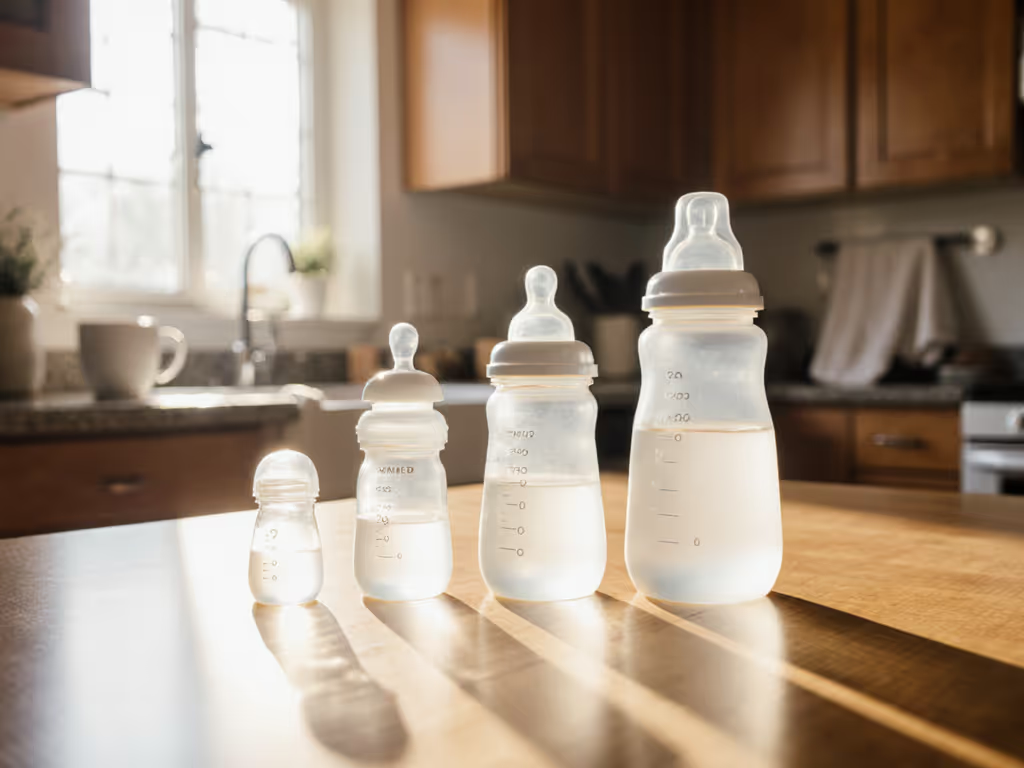
Did you know that larger baby bottles can lead to up to 4 extra ounces of formula intake each day for some infants? Choosing the perfect bottle size does much more than just fit feeding preferences. The right capacity shapes healthy eating habits, supports your baby’s comfort, and may even reduce risks of overfeeding. With so many bottle sizes on store shelves, understanding the differences can help you confidently match your child’s changing needs at every stage.
Key Takeaways
| Point | Details |
|---|---|
| Bottle Size Matters | Bottle capacity significantly influences feeding volume and can impact the risk of overfeeding, particularly in infants. |
| Age-Appropriate Selection | Use smaller bottles for newborns and increase size as your baby grows and appetite expands. |
| Monitor Individual Cues | Always pay attention to your baby's feeding cues and consult with pediatricians for personalized advice. |
| Avoid Common Mistakes | Refrain from defaulting to larger bottles too quickly or ignoring your baby's individual developmental stage. |
Understanding Bottle Size Variation Basics
Parents often find themselves puzzled by the wide range of baby bottle sizes available, wondering which size truly meets their infant's nutritional needs. Bottle size variation isn't just about random manufacturing choices - it's a carefully considered aspect of infant feeding design that directly impacts how much and how efficiently babies consume milk or formula.
Research reveals fascinating insights into bottle sizing dynamics. A critical study found that among exclusively formula-fed two-month-old infants, larger bottles (6 oz or more) were associated with approximately 4 ounces more formula intake per day compared to smaller bottles. This data underscores a significant potential risk: bottle capacity can substantially influence feeding volume and potentially contribute to overfeeding.
Typically, baby bottles come in standard sizes ranging from 4 to 8 ounces, each serving distinct developmental stages. Smaller bottles (around 4 oz) are perfectly suited for newborns and younger infants who have smaller stomach capacities and eat more frequently. As babies grow and their nutritional requirements increase, larger bottles become more appropriate. The key is matching bottle size to your baby's age, appetite, and feeding patterns - not defaulting to a one-size-fits-all approach.
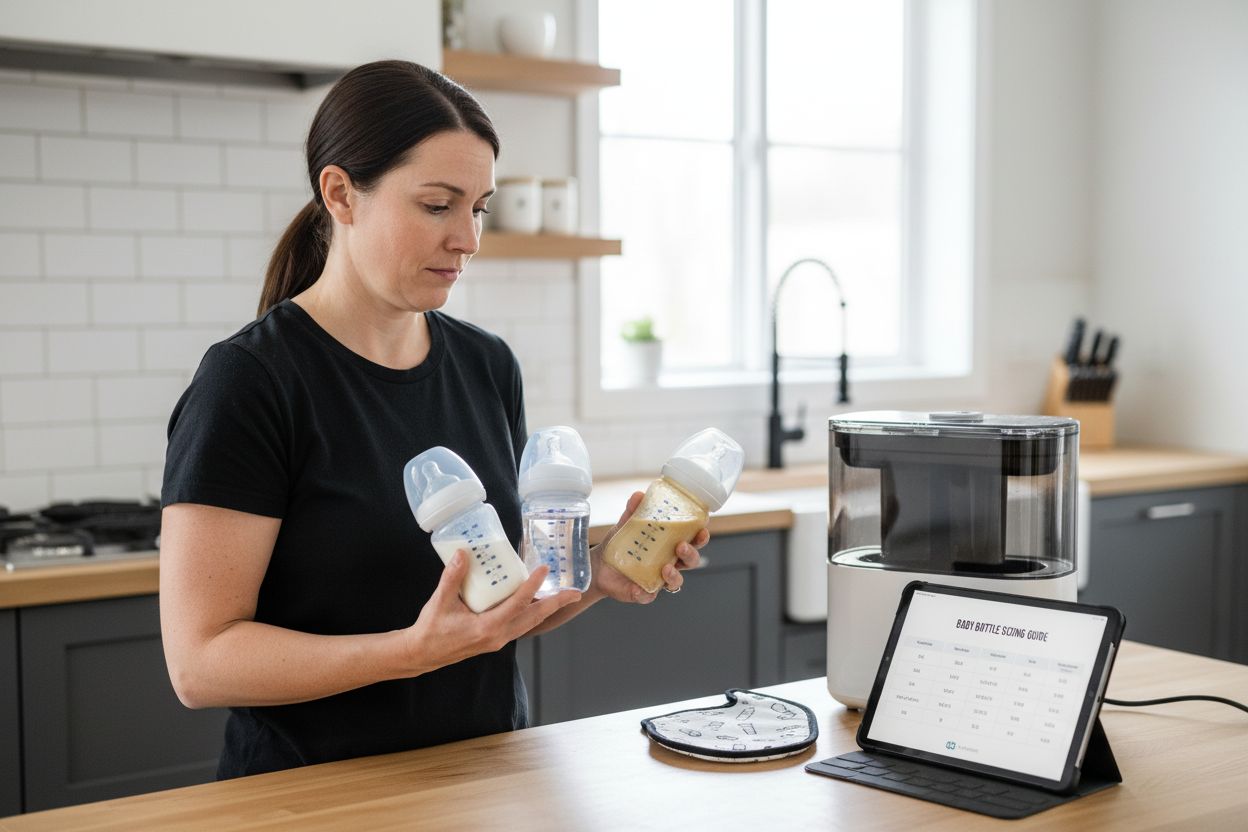
To help you navigate bottle sizing effectively, here are some practical guidelines:
- Newborns (0-2 months): Stick to 4 oz bottles
- Infants (2-4 months): Consider transitioning to 5-6 oz bottles
- Older infants (4-6 months): 8 oz bottles become more suitable
- Always monitor your baby's individual feeding cues and consult pediatricians for personalized advice
Common Bottle Sizes And Their Uses
Navigating the world of baby bottle sizes can feel like solving a complex puzzle, but understanding the standard sizing options makes feeding your infant much simpler. Bottle capacity plays a crucial role in matching your baby's developmental stage, nutritional needs, and feeding comfort.
Research indicates that bottle sizes typically range from tiny 2 oz (60 ml) containers for newborns to more substantial 8-9 oz bottles designed for older infants. Here's a comprehensive breakdown of bottle sizes and their recommended usage:
Here's a comparison of common baby bottle sizes and their recommended usage:
| Bottle Size | Typical Age Range | Recommended Use |
|---|---|---|
| 2 oz (60 ml) | Premature<br>Newborns | Very small feeds<br>Premature babies |
| 4 oz | 0-3 months | Frequent, smaller meals |
| 6 oz | 1-6 months | Transitional bottle<br>Increasing appetite |
| 8-9 oz | 4+ months | Older infants<br>Larger feed volumes |
- 2 oz (60 ml) Bottles: Perfect for premature babies or newborns with tiny stomachs
- 4 oz Bottles: Ideal starter size for babies 0-3 months, supporting smaller, frequent feeds
- 6 oz Bottles: Recommended for infants 1-6 months, bridging the gap between newborn and larger feeding volumes
- 8-9 oz Bottles: Best for babies over 4 months with increasing nutritional requirements
Choosing the right bottle size isn't just about volume - it's about supporting your baby's physical development and feeding comfort.
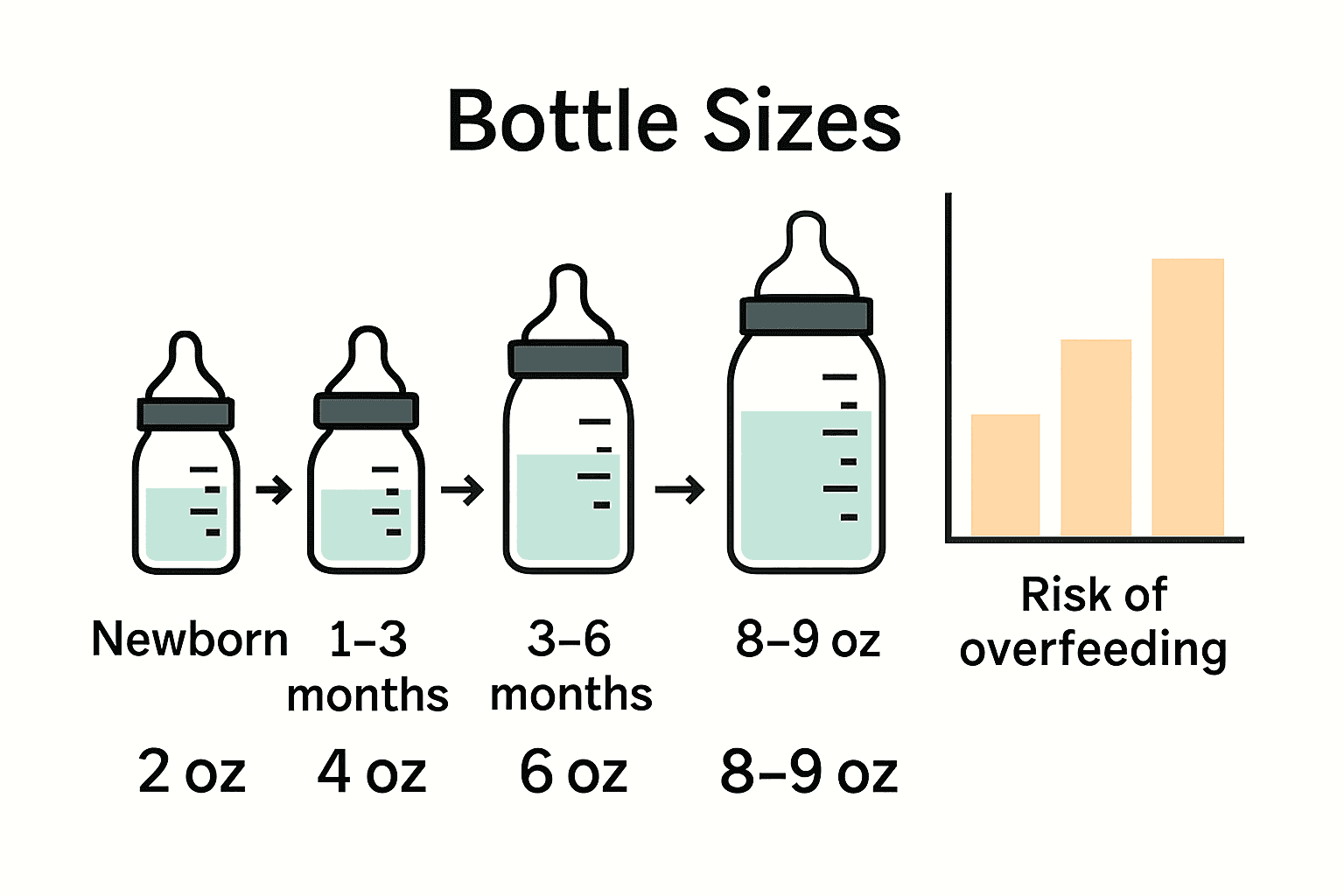 Smaller bottles are lighter, easier for tiny hands to grip, and prevent potential overfeeding by limiting total milk intake. As your baby grows, gradually increasing bottle size ensures they receive appropriate nutrition while developing healthy feeding habits. Always watch your baby's individual cues and consult your pediatrician to personalize your bottle selection strategy.
Smaller bottles are lighter, easier for tiny hands to grip, and prevent potential overfeeding by limiting total milk intake. As your baby grows, gradually increasing bottle size ensures they receive appropriate nutrition while developing healthy feeding habits. Always watch your baby's individual cues and consult your pediatrician to personalize your bottle selection strategy.
Factors Influencing Baby Bottle Capacity
Selecting the right bottle capacity isn't just a matter of guesswork - it's a nuanced process influenced by multiple critical factors that directly impact your baby's feeding experience. Bottle capacity represents more than just volume; it's a delicate balance of developmental readiness, nutritional needs, and individual feeding patterns.
Pediatric research highlights several key determinants that parents should consider when choosing bottle size. Age and developmental stage play a primary role, with most infants unable to handle larger volumes until around four months. Scientific studies have demonstrated a direct correlation between bottle size and formula intake - larger bottles can inadvertently encourage overfeeding, potentially leading to digestive discomfort or excessive weight gain.
Beyond age, other crucial factors influence bottle capacity selection:
- Stomach capacity: Newborns have tiny stomachs that can only handle small volumes
- Feeding frequency: Smaller bottles encourage more frequent, smaller feeds
- Baby's weight and growth rate: Individual growth trajectories impact nutritional needs
- Feeding method: Breastfed vs formula-fed babies might have different volume requirements
Parents should approach bottle sizing as a dynamic, adaptive process. Individual feeding cues are far more important than rigid volume guidelines. Watch for signs of fullness, comfort, and satisfaction. Gradual transitions between bottle sizes, coupled with close observation of your baby's responses, ensure a comfortable and nutritionally appropriate feeding experience. Always consult your pediatrician for personalized guidance tailored to your infant's unique developmental journey.
Safety Standards And Age Recommendations
Navigating baby bottle safety requires more than just picking a cute design - it's about understanding complex material science and evolving regulatory standards that protect your infant's health. Bottle safety encompasses everything from chemical composition to manufacturing processes, with stringent guidelines designed to minimize potential risks during early childhood development.
Regulatory agencies worldwide have made significant strides in establishing comprehensive safety protocols. For instance, the UK and EU took decisive action in 2011 by banning Bisphenol A (BPA) in baby bottles to prevent potential chemical leaching. This landmark decision highlighted the critical importance of material selection in infant feeding equipment. Modern parents now have access to bottles made from safer materials like polypropylene, glass, and silicone, each offering unique advantages in terms of durability, chemical stability, and potential health impacts.
Research has uncovered additional considerations beyond material selection. Recent studies have raised concerns about microplastics potentially released during high-temperature sterilization, especially with polypropylene bottles. This emerging evidence suggests parents should:
- Choose bottles from reputable manufacturers
- Prefer materials like glass, silicone, or stainless steel
- Use low-temperature sterilization methods
- Regularly inspect bottles for wear and tear
- Replace bottles according to manufacturer recommendations
Age-specific recommendations play a crucial role in bottle safety. Newborns require specialized bottles with slow-flow nipples, while older infants can handle more complex designs. Always match bottle features to your baby's developmental stage, paying close attention to nipple flow rates, bottle materials, and ease of cleaning. Consulting pediatricians and staying informed about current safety research will help you make the most responsible choices for your infant's feeding journey.
Mistakes To Avoid When Choosing Bottle Size
Choosing the right bottle size might seem straightforward, but many parents unknowingly make critical mistakes that can impact their baby's feeding experience and nutritional intake. Bottle selection is a nuanced process that requires careful consideration beyond simple volume measurements.
One of the most significant errors parents make is defaulting to larger bottles too quickly. Scientific research has definitively shown that using oversized bottles can inadvertently lead to overfeeding. When caregivers provide bottles larger than necessary, they often unconsciously encourage babies to consume more formula than their developing digestive systems can comfortably handle. This approach not only risks potential weight gain but can also create long-term eating pattern complications.
Common bottle size selection mistakes include:
- Buying ahead: Purchasing large quantities of one bottle size before understanding your baby's specific needs
- Ignoring developmental stages: Using adult-sized bottles for newborns
- Forcing bottle completion: Expecting babies to finish larger volumes just because space exists
- Neglecting individual feeding cues: Prioritizing bottle size over baby's actual hunger signals
- Inconsistent nipple flow: Mismatching bottle size with appropriate nipple speed
Successful bottle sizing requires flexibility, observation, and a willingness to adapt. Pay attention to your baby's unique feeding patterns, growth trajectory, and comfort levels. Consult pediatricians regularly, be prepared to switch bottle sizes as your infant develops, and remember that no single approach works universally. Your baby's individual needs should always guide your bottle selection strategy.
Take the Guesswork Out of Baby Bottle Sizing
Are you feeling overwhelmed by choosing the right bottle size and worried about accidentally overfeeding your baby or causing frustration at feeding time? If this article left you questioning which bottle truly fits your child’s age, appetite, and safety needs, you are not alone. So many parents spend hours searching for answers on bottle size variation, only to end up with a collection of mismatched bottles and conflicting advice. The good news is, you do not have to face these choices without expert help.
Visit Family Bottle Fit and discover easy-to-use, research-backed guidance to select and customize baby bottles the right way. Whether you need to match the perfect bottle capacity for your infant’s stage or want solutions to avoid issues like nipple confusion or feeding refusal, our tailored guides and comparison tools make it simple. Act now to gain practical tips and confidence in your feeding choices—explore our resources and take your next step toward calmer, healthier feeding at Family Bottle Fit.
Frequently Asked Questions
What are the standard baby bottle sizes available?
Baby bottles generally range from 2 oz for premature infants to 8-9 oz for older infants. Common sizes include 2 oz, 4 oz, 6 oz, and 8 oz bottles, each designed for different developmental stages and feeding needs.
How do I know when to switch to a larger bottle size?
You should consider transitioning to a larger bottle as your baby grows and their appetite increases. Newborns typically use 4 oz bottles, while older infants around 4-6 months may require 8 oz bottles. Always monitor feeding cues and consult your pediatrician for personalized advice.
What factors should I consider when selecting baby bottle size?
Key factors include your baby's age and developmental stage, stomach capacity, feeding frequency, weight, growth rate, and whether the baby is breastfed or formula-fed. Observing individual feeding cues is crucial in determining the right bottle size.
How can oversized bottles affect my baby's feeding?
Using larger bottles than necessary can encourage overfeeding, as larger capacities may lead babies to consume more formula than their digestive systems can handle. This can risk excessive weight gain and create long-term eating issues. Always ensure the bottle size matches your baby's appetite and needs.
Recommended
Related Articles

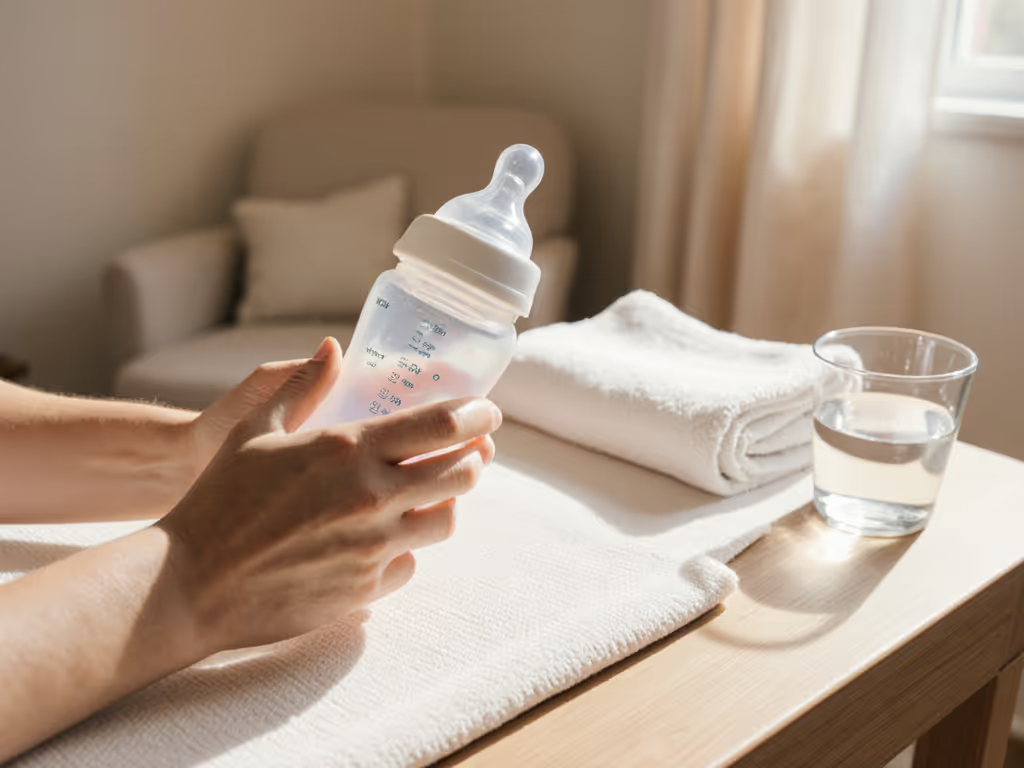
Why Slow Flow Nipples Matter: Complete Guide
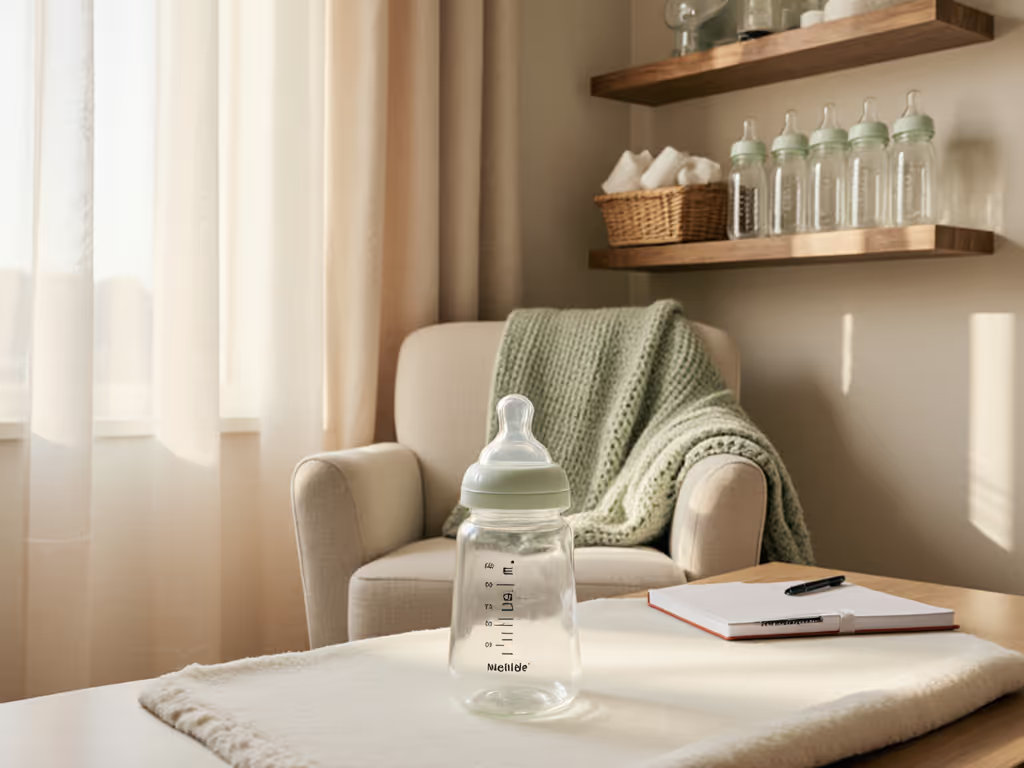
Step-by-Step Guide to Preventing Nipple Confusion Easily
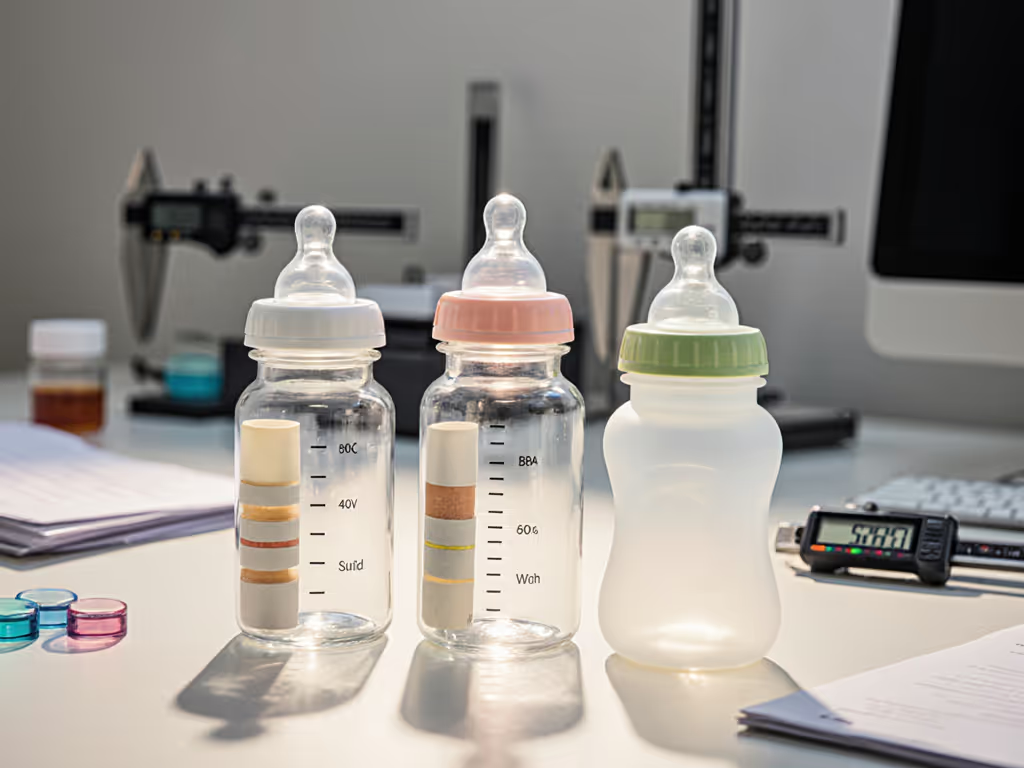
Complete Guide to the Role of Bottle Construction
